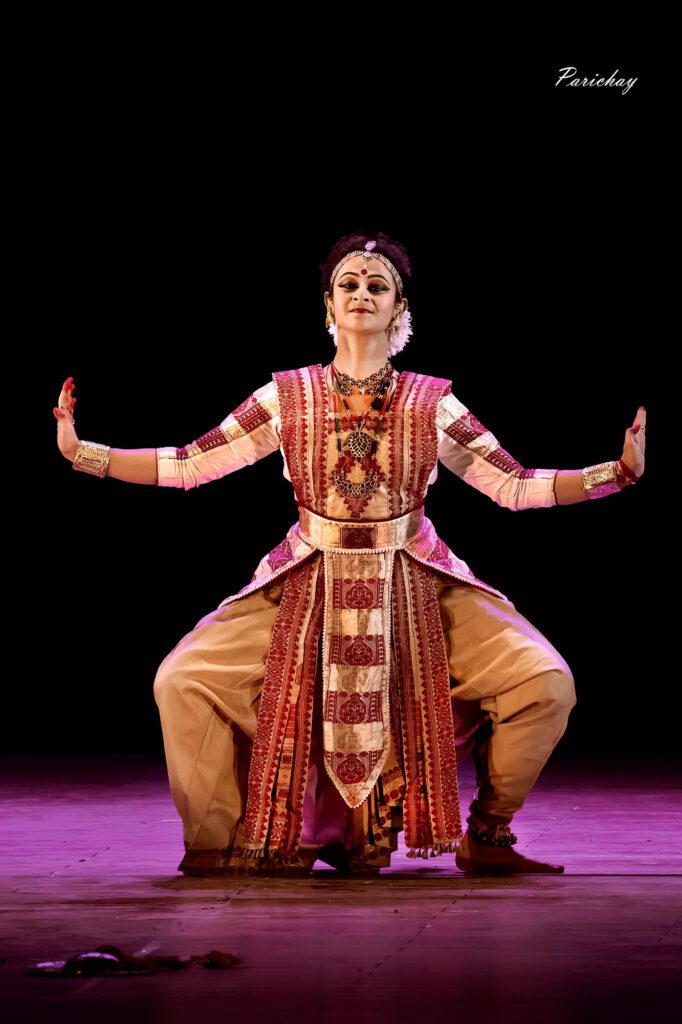Sattriya dance is derived from Sattras. Sattras are the Vaishnava monasteries in Assam. The saint-poet Shankar Deva of the 15th century AD started this institution to bring harmony to the region of Assam through religion, creating forms of dance-dramas, music, painting, and collective prayer.

The dance forms which have come to stay are called Sattriya dances, sharing all the characteristics of a classical dance form.
As a living tradition, these dances are performed in the namghar, the prayer hall of the sattra by the celibate monks. Dressed in white costumes and turbans, headgears, include khol playing, performing a dance, creating soundscapes, floor patterns, and choreographic designs.

The numbers like “Sutradhari,” “Chali,” “Jhumura” partake of nritta, pure dance, nritya, expressional dance, and dance-drama elements. The music is provided by khol-drum, patital, boratal-cymbals along with songs.
The repertoire of this dance is vast. Now young female dancers also study these dances and they have come out of the sattra. They are presented on the metropolitan stages, with typical music of Assam, costumes, and literary compositions viz borgeet. Both solo and group numbers enrich its presentation.

The dresses are usually made of pat, a type of silk produced in Assam, woven with intricate local motifs. The ornaments, too, are based on traditional Assamese designs.

INSTRUMENTS USE IN SATTRIYA
Violin, cymbals and Khol (Drum).

